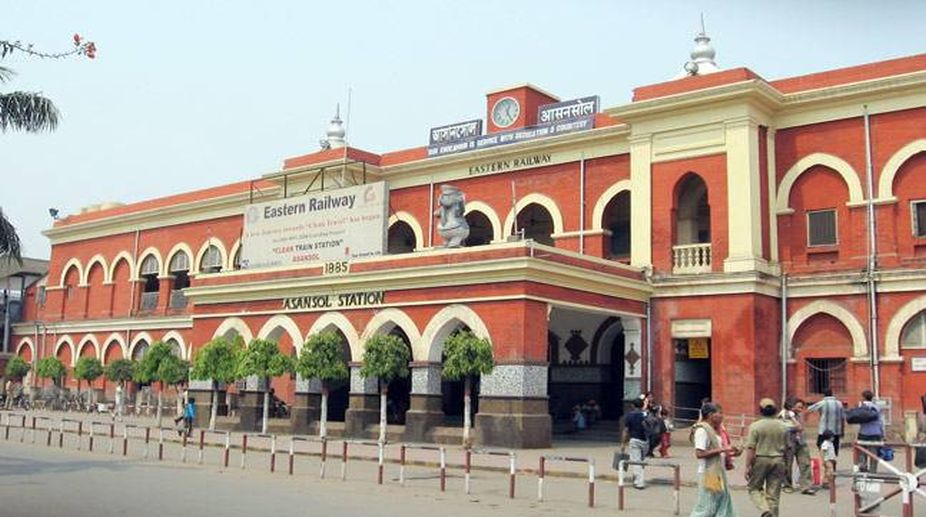Murshidabad violence planned by BJP: CM
Terming Prime Minister Narendra Modi as a 'great liar', Chief Minister Mamata Banerjee today said that the violence at Rezinagar in Murshidabad on Wednesday was preplanned by the BJP.

Asansol Railway Station (PHOTO: TWITTER)
On 25 March 2017, a Kolkata newspaper reported that West Bengal Chief Minister Mamata Banerjee “is all set to inaugurate the newest district of the state – Burdwan Industrial (Asansol-Durgapur) on 7 April, barely two days after inaugurating the new Jhargram district. At a function to be held at the historic Polo Ground in Asansol, she will announce the setting up of the new district. The district administration has already started preparations for her programme. Asansol, the oldest industrial town in the country will become the new district headquarters.”
Partition in 1947 saw the rich province of Bengal divided into East Pakistan and West Bengal. Kolkata, once the capital of British India and the “second city of Empire’, declined in significance to the state capital of West Bengal and the next few decades witnessed the loss of power, flight of capital and investment and political turmoil.
The Communist Party of India (Marxist)-led Left Front took over power in 1977 and ruled for 34 years until they were defeated by the Trinamul Congress under Mamata Banerjee in 2011 and virtually routed in 2014. Under the Left Front, the districts of Dinajpur, Medinipur and 24 Parganas were sub-divided into Uttar and Dakshin Dinajpur, Purba and Paschim Medinipur and North and South 24 Parganas.
Advertisement
Under the Trinamul regime, Kalimpong in Darjeeling district was created a separate district last month, consisting of the Kalimpong Municipality and three community development blocks, namely, Kalimpong I, Kalimpong II and Gorubathan. And now the state government is all set to create the newest district by bifurcating Burdwan and consolidating Asansol as a leading district headquarters.
Is the division of West Bengal into smaller and smaller administrative units going to be an effective policy? Friedrich Ratzel wrote in his ‘Politische Geographie’ of 1897 that the state is an organism attached to the land, which, like other organisms in nature, passes through a developmental cycle. Like natural organisms, states must also grow or die as they cannot stand still. States were seen to be involved in an ongoing struggle for survival like other natural organisms. The struggle was manifest in the states’ efforts to acquire larger and larger territories as living spaces to support their growing populations – this was the central idea behind the concept of ‘Lebensraum’ (living space), according to R. D. Dikshit writing in 1997.
It may be analysed in the political context of the subdivision of West Bengal into a multiplicity of regional administrative units. The concept of a region is a fundamental one in geography. A region was defined by Vidal de la Blache as a “domain where many dissimilar beings, artificially brought together, have subsequently adapted themselves to a common existence” while Herbertson defined it as “a complex of land, water, air, plant, animal and man regarded in their special relationships as together constituting a definite, characteristic portion of the earth’s surface.”The earth surface has been classified into several categories. A process closely allied to classification is logical division, where a class is taken as an universe and divided into subclasses based on some logical principle. Instead of seeing similarities, we look for differences; instead of building up, we are involved in breaking down. Divisions are not absolute and should be changed with new information. It is vital to keep updating the regional systems with reviews of data. If an area is to be divided into regions, then all parts of the area must be assigned to one region and each to one region only. Regions of the same order should be based upon the same property. To this should be added that regional boundaries are frequently coalesced with political, economic and social boundaries.
Mousumi Ghosh writes in 2016 that “Asansol city in the western part of the Barddhaman district in West Bengal …is a model of a city which owes its existence to a spatially concentrated mineral deposit, coal. It is the nodal centre of the vast Raniganj coal belt. Coal is the chief resource which initiated the process of capital circulation in this region…(It) is an important railway junction station in eastern India… Very few cities in India and no other places in West Bengal have such (a) juxtaposition of natural and built space like collieries, agricultural lands, villages as well as very important rail and road networks, junction rail station, basic and heavy industries and different ancillary industries and a bustling trade and transport centre…Asansol has an urban area of 127.87 sq km. The population (was) 475,439 (and) (p)opulation density was 3718 per sq km (in 2001)…(t)he Asansol Municipal Corporation was formed in 1994 by amalgamating Asansol municipality, Asansol blocks and the Burnpur Notified Area. The area of the Raniganj coal field is 1530 sq km…Asansol has an excellent strategic location…in the border region of Bengal and Jharkhand”.
The Draft Development Plan (2008-2013) of Asansol Municipal Corporation put the population of the Asansol Durgapur Planning Area at 3.2 million (2011), 4 million (2021) and 4.45 million (2025). The larger the population, the greater the need for division, to try to bring about administrative efficiency, create more employment and generate political and economic capital.
The division of Kalimpong from Darjeeling may be seen as a political move to spread socio-economic and socio-cultural development in tricky north Bengal. The division of Barddhaman (formerly Burdwan) is possibly an economic move, as the area of the new district is a treasury with vast income-generating ability, required in the divide and rule tactics of West Bengal.
The writer is Honorary Associate, Centre for Urban Economic Studies, University of Calcutta, Kolkata.
Advertisement